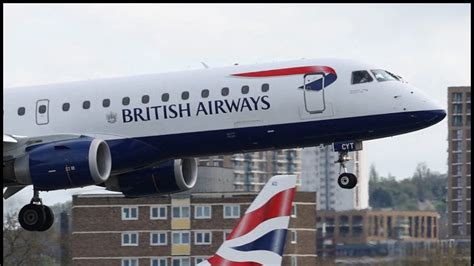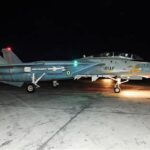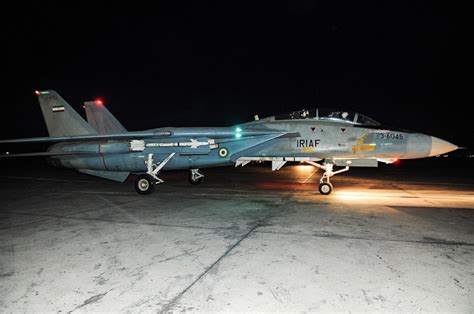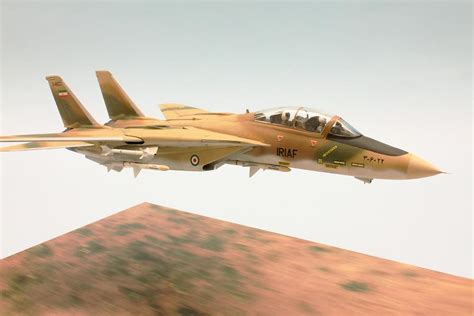
A British Airways Dreamliner, carrying 214 passengers to India, was forced to return to Heathrow Airport after an eight-hour “flight to nowhere” due to a technical issue shortly after takeoff. The Boeing 787-9, operating as BA139, departed London but turned back over Germany, leaving passengers frustrated and prompting the airline to arrange alternative travel.
The British Airways flight BA139, en route to Chennai, India, experienced a frustrating ordeal as it was compelled to return to London Heathrow Airport after being airborne for approximately eight hours. The Boeing 787-9 Dreamliner, carrying 214 passengers, took off as scheduled but encountered a technical malfunction that ultimately led to the decision to abort the journey over Germany and return to its origin. This incident has left passengers inconvenienced and the airline scrambling to provide alternative arrangements.
The flight, which was supposed to transport passengers from London to Chennai, became a “flight to nowhere” when the crew detected a technical problem that affected the aircraft’s performance. Although the specific nature of the technical issue has not been officially disclosed, it was deemed severe enough to warrant the return to Heathrow Airport. As reported by various flight tracking websites, the aircraft reversed its course over Germany, spending several hours flying back to London.
Passengers onboard the flight expressed their frustration and disappointment as they realized the aircraft was turning back. “The passengers were understandably frustrated,” said a British Airways spokesperson. “We understand that this was a disappointing experience for our customers, and we apologize for the inconvenience caused.” The airline has committed to providing passengers with alternative travel arrangements to reach their intended destination.
The incident has raised questions about the reliability of modern aircraft and the thoroughness of pre-flight checks. While technical glitches can occur unexpectedly, the long duration of the flight before the problem was detected has prompted some to wonder whether the issue could have been identified earlier. Furthermore, the incident highlights the challenges faced by airlines when dealing with unexpected technical problems, especially on long-haul flights.
British Airways has stated that they are conducting a thorough investigation into the cause of the technical issue and are working to prevent similar incidents from occurring in the future. The airline is also offering affected passengers compensation and assistance to mitigate the impact of the disruption. This event underscores the importance of safety protocols and the commitment of airlines to prioritize passenger well-being, even in the face of technical difficulties.
Details of the Incident
The British Airways flight BA139, operated by a Boeing 787-9 Dreamliner, departed from London Heathrow Airport (LHR) with 214 passengers onboard, destined for Chennai International Airport (MAA) in India. Shortly after takeoff, the crew became aware of a technical issue that began to affect the aircraft’s systems.
Flight tracking data indicates that the aircraft initially continued on its planned route, flying over parts of Europe, including Belgium and Germany. However, as the technical problem persisted and possibly worsened, the decision was made to turn the aircraft around while it was over Germany. The pilots followed standard safety procedures, communicating with air traffic control and initiating the necessary steps to return to Heathrow Airport.
The return journey took several hours, as the aircraft had to fly back across Europe to reach London. During this time, the crew kept passengers informed about the situation, although the specific details of the technical issue were not disclosed to the public. Upon arrival at Heathrow, the aircraft was grounded for inspection and maintenance.
Passenger Experiences
Passengers onboard the ill-fated flight experienced a mix of confusion, frustration, and disappointment. Many had anticipated a long but uneventful journey to Chennai, only to find themselves back where they started after nearly a full day of travel. The uncertainty surrounding the technical issue and the lack of clear information added to their distress.
One passenger, speaking anonymously, described the atmosphere on board as tense. “There was a lot of speculation about what was wrong,” they said. “The crew did their best to reassure us, but you could tell they were also concerned.”
Another passenger mentioned the inconvenience of having to rearrange travel plans and the impact on their schedules. “I had important meetings scheduled in Chennai,” they said. “Now I have to reschedule everything and hope that I can get another flight soon.”
British Airways acknowledged the inconvenience caused to passengers and pledged to provide them with alternative travel arrangements, including rebooking on other flights and offering accommodation for those who needed it. The airline also promised to compensate passengers for the disruption to their travel plans, in accordance with EU regulations.
Technical Aspects of the Boeing 787-9 Dreamliner
The Boeing 787-9 Dreamliner is a modern, long-range wide-body jet airliner known for its fuel efficiency and passenger comfort. It incorporates advanced materials and technologies, including a composite airframe and advanced engine designs. The aircraft is designed to fly long distances with a high degree of reliability.
Some of the key technical features of the Boeing 787-9 include:
- Composite Airframe: The airframe is made primarily of composite materials, which are lighter and stronger than traditional aluminum alloys. This reduces the aircraft’s weight, improving fuel efficiency.
- Advanced Engines: The 787-9 is powered by either General Electric GEnx or Rolls-Royce Trent 1000 engines, which are designed for high performance and low emissions.
- Fly-by-Wire Controls: The aircraft uses a fly-by-wire control system, which replaces traditional mechanical controls with electronic signals. This improves precision and reduces pilot workload.
- Advanced Avionics: The 787-9 features a state-of-the-art avionics suite, including advanced navigation and communication systems.
- Enhanced Cabin Environment: The aircraft is designed to provide a more comfortable cabin environment, with higher humidity, lower cabin altitude, and larger windows.
Despite its advanced technology, the Boeing 787-9 is not immune to technical problems. Like any complex machine, it can experience malfunctions that require maintenance and repairs. Airlines have established maintenance programs to ensure the aircraft are kept in optimal condition, but unexpected issues can still arise.
Airline Response and Investigation
British Airways has initiated a thorough investigation into the cause of the technical issue that forced the flight to return to London. The investigation will involve examining the aircraft’s maintenance records, analyzing flight data, and interviewing the flight crew. The goal is to identify the root cause of the problem and implement measures to prevent similar incidents from occurring in the future.
The airline is working closely with Boeing, the manufacturer of the 787-9, and other technical experts to conduct the investigation. The findings of the investigation will be shared with regulatory authorities, such as the UK Civil Aviation Authority (CAA), to ensure that all necessary safety precautions are taken.
In the meantime, British Airways is taking steps to minimize the impact of the disruption on passengers. The airline is rebooking affected passengers on alternative flights, providing accommodation and meals as needed, and offering compensation for the inconvenience caused. British Airways is also providing regular updates to passengers about the status of their travel plans.
Impact on Aviation Industry
The incident involving the British Airways flight BA139 has drawn attention to the challenges faced by airlines in maintaining the reliability of modern aircraft. While air travel is generally very safe, technical problems can and do occur, causing disruptions and inconveniencing passengers. This event serves as a reminder of the importance of rigorous maintenance programs, thorough pre-flight checks, and effective communication with passengers.
The aviation industry is constantly evolving, with new technologies and procedures being developed to improve safety and efficiency. However, even the most advanced aircraft are susceptible to technical issues, and airlines must be prepared to deal with these issues in a timely and effective manner. This includes having contingency plans in place to minimize the impact on passengers and ensuring that crews are properly trained to handle emergencies.
The incident also highlights the importance of transparency and communication. Airlines should be open and honest with passengers about the nature of technical problems and the steps being taken to resolve them. This can help to build trust and alleviate passenger anxiety.
Background on Similar Incidents
While the “flight to nowhere” incident involving British Airways is relatively rare, there have been other similar occurrences in the aviation industry. These incidents often involve technical problems that require aircraft to return to their origin or divert to an alternative airport. Some notable examples include:
- In 2018, an Emirates Airbus A380 flying from Dubai to Brisbane was forced to return to Dubai after experiencing a technical issue with one of its engines. The aircraft had been airborne for several hours when the problem was detected.
- In 2019, a Qantas Boeing 747 flying from Sydney to Honolulu had to divert to Brisbane after experiencing a problem with its fire suppression system. The aircraft was carrying hundreds of passengers when the incident occurred.
- In 2020, a Lufthansa Airbus A380 flying from Frankfurt to Los Angeles turned back over the Atlantic Ocean after experiencing a problem with its navigation system. The aircraft returned to Frankfurt without incident.
These incidents highlight the fact that technical problems can occur on any type of aircraft, regardless of its age or manufacturer. Airlines must be prepared to deal with these problems in a safe and efficient manner, and passengers should be aware of the potential for disruptions.
The Role of Flight Tracking Technology
Flight tracking technology has become an increasingly important tool for monitoring air traffic and providing information to passengers. Websites like FlightAware and Flightradar24 allow users to track the real-time location of aircraft, view flight paths, and access historical flight data. This technology can be particularly useful in situations where flights are delayed or diverted, as it provides passengers with up-to-date information about the status of their flights.
In the case of the British Airways flight BA139, flight tracking data played a key role in informing the public about the incident. News organizations and aviation enthusiasts used flight tracking websites to monitor the aircraft’s progress and report on its return to London. This helped to raise awareness of the incident and prompted British Airways to issue a statement about the situation.
Flight tracking technology also has potential safety benefits. By monitoring flight paths and identifying deviations from planned routes, air traffic controllers can detect potential problems and take corrective action. This can help to prevent accidents and ensure the safety of air travel.
Airline Compensation Policies
When flights are delayed or cancelled due to technical problems or other issues, passengers may be entitled to compensation from the airline. The amount of compensation depends on the length of the delay, the distance of the flight, and the regulations in place in the country where the flight originated.
In the European Union, passengers are protected by Regulation (EC) No 261/2004, which sets out rules for compensation in cases of flight delays, cancellations, and denied boarding. Under this regulation, passengers may be entitled to compensation ranging from €250 to €600, depending on the distance of the flight and the length of the delay.
Passengers may also be entitled to reimbursement of expenses incurred as a result of the delay or cancellation, such as the cost of meals, accommodation, and transportation. Airlines are required to provide passengers with information about their rights and how to claim compensation.
In the case of the British Airways flight BA139, passengers are likely to be entitled to compensation under EU Regulation 261/2004, as the flight originated in London. British Airways has stated that it will comply with its obligations under the regulation and provide affected passengers with the compensation they are entitled to.
The Future of Air Travel Reliability
The incident involving the British Airways flight BA139 raises questions about the future of air travel reliability. As aircraft become more complex and reliant on advanced technology, there is a risk that technical problems could become more frequent. Airlines must invest in rigorous maintenance programs and training to ensure that their aircraft are kept in optimal condition and that crews are prepared to deal with any issues that may arise.
The aviation industry is also exploring new technologies and procedures to improve safety and reliability. These include the use of predictive maintenance techniques, which use data analytics to identify potential problems before they occur, and the development of more robust and resilient aircraft systems.
Another important factor is the role of regulation. Regulatory authorities, such as the CAA in the UK and the FAA in the US, play a key role in setting safety standards and ensuring that airlines comply with these standards. These authorities must continue to monitor the aviation industry and adapt their regulations to address new challenges and risks.
Ultimately, the goal is to make air travel as safe and reliable as possible. This requires a collaborative effort from airlines, manufacturers, regulatory authorities, and passengers. By working together, we can ensure that air travel remains the safest and most efficient mode of transportation.
Environmental Impact
The “flight to nowhere” not only disrupted passengers’ plans but also had an environmental impact. The unnecessary burning of jet fuel for an eight-hour flight contributes to carbon emissions and adds to the aviation industry’s carbon footprint. Considering the growing concerns about climate change, incidents like these highlight the need for airlines to prioritize fuel efficiency and explore sustainable aviation practices. The aviation industry is under increasing pressure to reduce its environmental impact, and events like this underscore the urgency of finding solutions to mitigate carbon emissions.
The Financial Implications for British Airways
The return of the flight has significant financial implications for British Airways. Besides the direct costs of fuel consumption for the unnecessary flight hours, there are expenses related to aircraft maintenance, passenger compensation, and rebooking passengers on alternative flights. Additional costs may include providing accommodation, meals, and ground transportation for affected travelers. The airline’s reputation could also suffer, potentially impacting future bookings. Insurance policies can cover some of these costs, but the overall financial burden is substantial.
Crew Fatigue and Operational Considerations
The incident also raises concerns about crew fatigue. The pilots and flight attendants had to manage an unexpected and extended flight duration, which could lead to physical and mental exhaustion. Airlines must ensure that crew members have adequate rest and follow strict fatigue management protocols to maintain safety standards. Operational considerations also come into play, as the airline has to reschedule crews and potentially delay other flights, leading to further disruptions.
Psychological Impact on Passengers
Beyond the logistical inconveniences, incidents like these can have a psychological impact on passengers. The stress of uncertainty, the fear of the unknown technical issue, and the overall disruption can lead to anxiety and frustration. Airlines need to provide adequate support and communication to passengers to address their concerns and mitigate the psychological effects of such events.
The Importance of Redundancy in Aviation Systems
The fact that a single technical issue could force a flight to return highlights the importance of redundancy in aviation systems. Aircraft are designed with multiple layers of backup systems to ensure that a failure in one component does not compromise the safety of the flight. However, in this case, the technical issue was deemed significant enough to warrant a return, indicating that the redundancy measures were not sufficient to address the specific problem. This underscores the need for continuous improvement and testing of aircraft systems to enhance their reliability and robustness.
FAQ
1. What exactly happened with the British Airways flight BA139?
British Airways flight BA139, a Boeing 787-9 Dreamliner en route from London Heathrow to Chennai, India, was forced to return to London after approximately eight hours due to a technical issue. The flight reversed course over Germany and landed back at Heathrow, leaving 214 passengers inconvenienced.
2. What was the nature of the technical issue?
The specific details of the technical issue have not been officially disclosed by British Airways. The airline stated that a technical problem affected the aircraft’s performance, warranting the return to Heathrow Airport. The exact nature of the issue is under investigation.
3. What compensation are passengers entitled to?
Passengers on flight BA139 are likely entitled to compensation under EU Regulation 261/2004, as the flight originated in London. The amount of compensation depends on the distance of the flight and the length of the delay. Additionally, passengers may be entitled to reimbursement of expenses incurred due to the disruption, such as meals, accommodation, and transportation. British Airways has stated that it will comply with its obligations under the regulation.
4. How has British Airways responded to the incident?
British Airways has apologized for the inconvenience caused to passengers and is providing alternative travel arrangements, including rebooking on other flights and offering accommodation. The airline is also conducting a thorough investigation into the cause of the technical issue and is working to prevent similar incidents from occurring in the future. They are also offering compensation to affected passengers.
5. What are the potential environmental impacts of this “flight to nowhere”?
The “flight to nowhere” resulted in unnecessary burning of jet fuel, contributing to carbon emissions and increasing the aviation industry’s carbon footprint. This underscores the need for airlines to prioritize fuel efficiency and explore sustainable aviation practices to mitigate their environmental impact. The incident highlights the environmental cost of technical malfunctions and the importance of reducing such occurrences.









